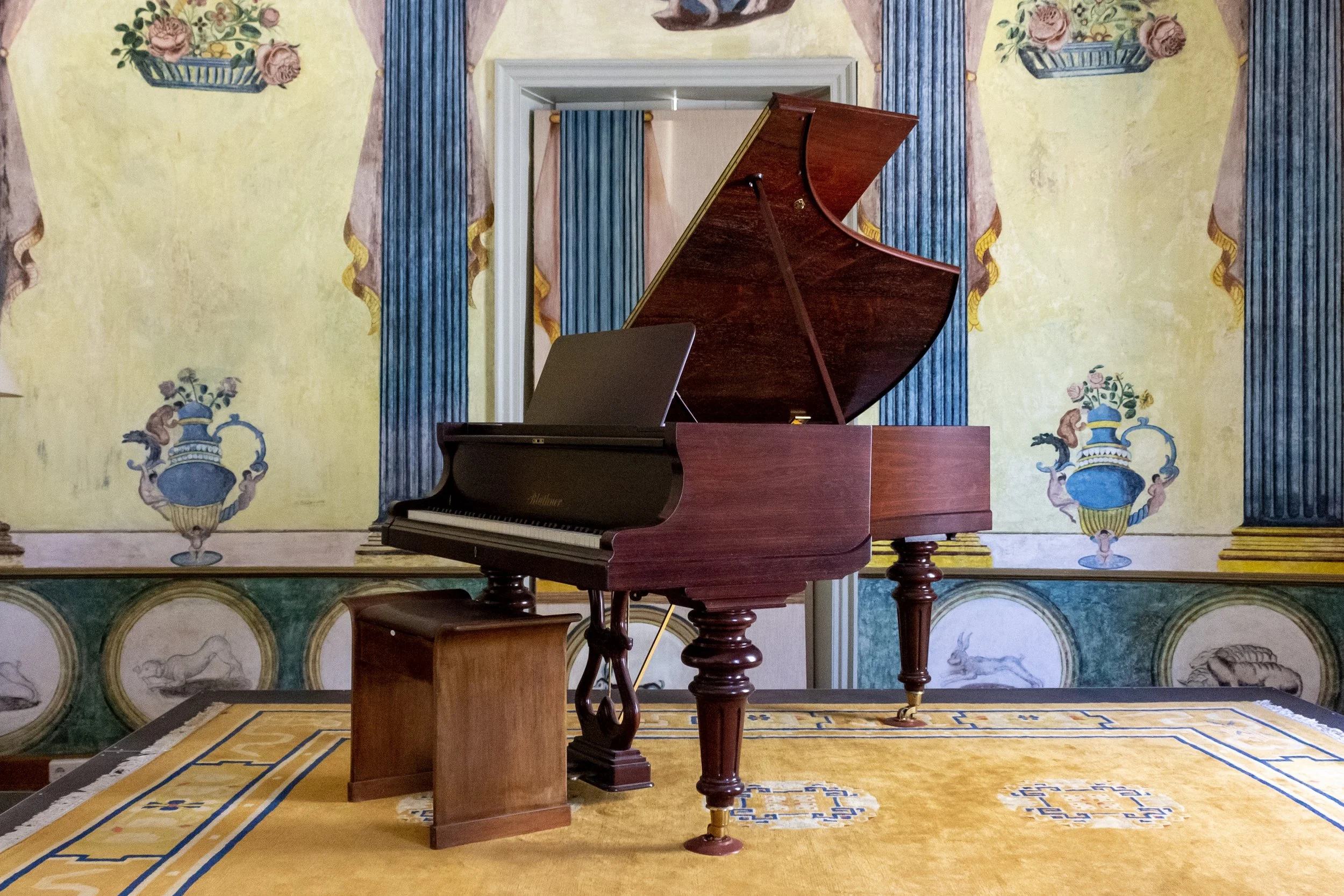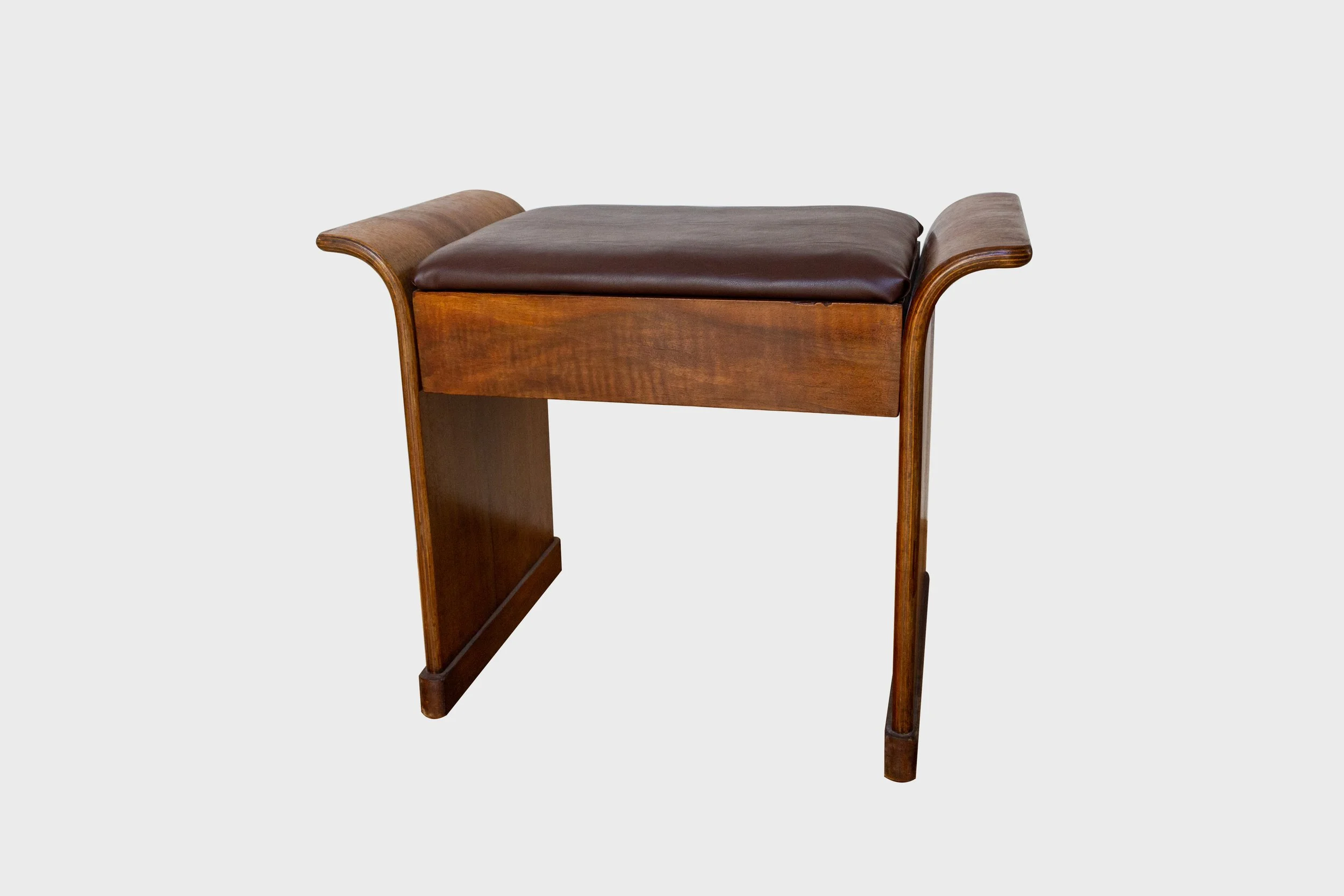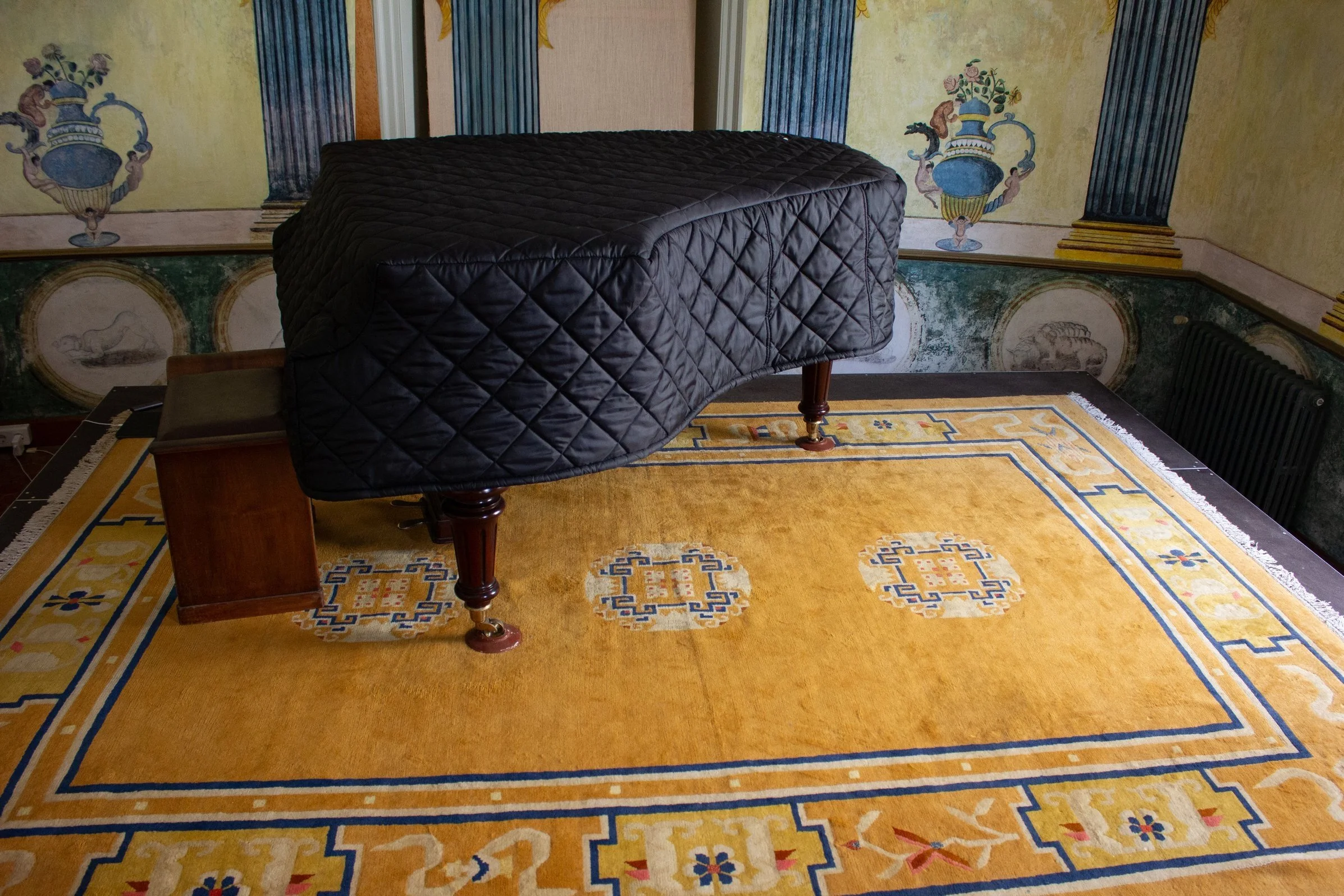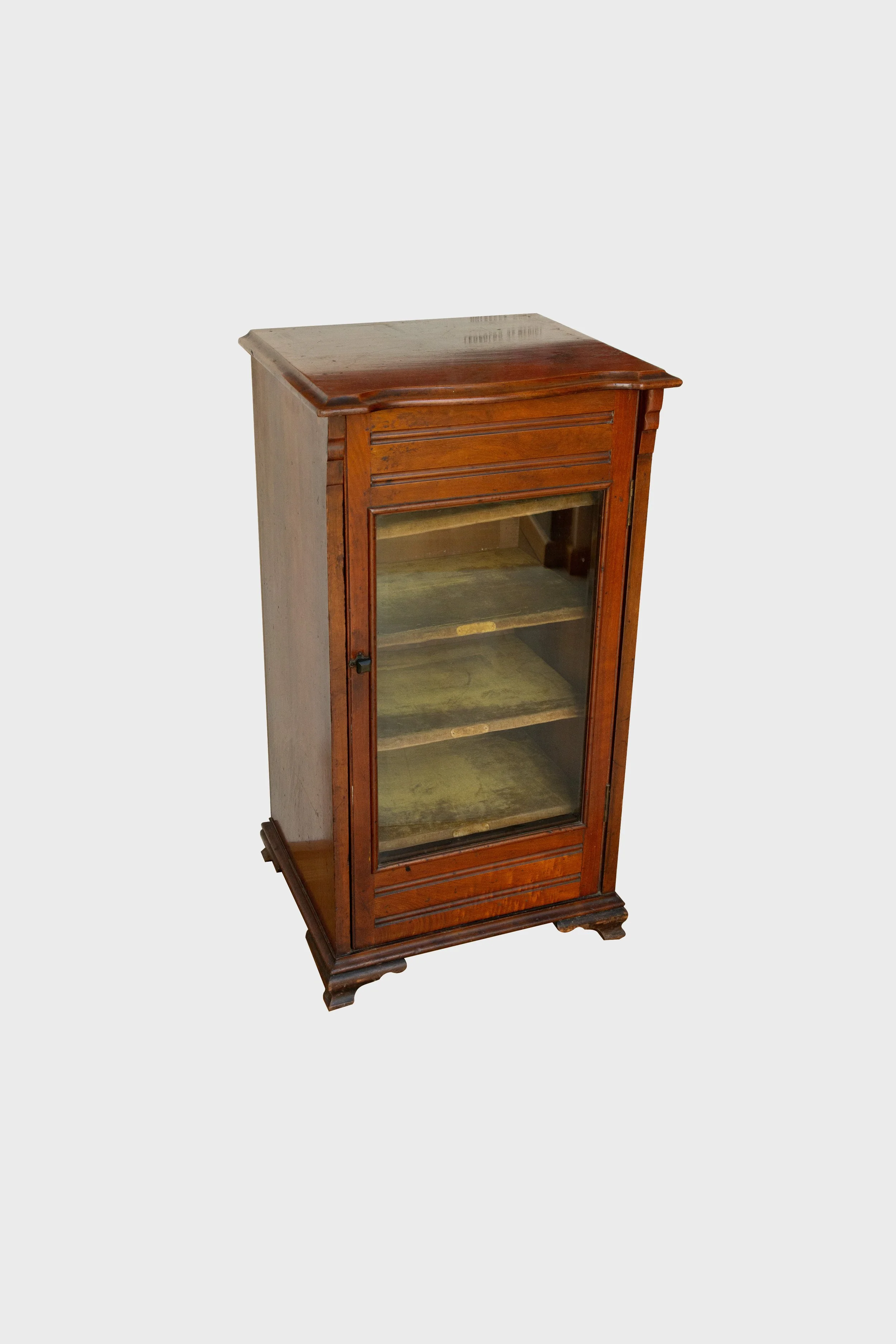93.10 Piano
English
A 7-octave ‘boudoir’ grand piano made by the Bluthner Company in Leipzig, Germany in 1885. Number 19164, with a rosewood case. 184 cm. long by 144 cm. wide by 104 cm. high.
We bought this wonderful instrument from Apollo Antiques, The Saltisford, Warwick in early 1993, and it remained in our family home in Warwick until 2011. It was then completely dismantled and rebuilt by a company called Piano Restorations Ltd. of The Bridge Mill, Twyford, Buckinghamshire, which specialises in the restoration of Bluthner Pianos. It was then shipped to Menorca in 2012 and entered the building into the Salon through the first floor balcony window!
The early popularity of Bluthner pianos is said to have been based on the smooth light touch resulting from the patented key/hammer action, and in 1873 the introduction of aliquot scaling invented by Julius Bluthner gave the warm romantic tone for which his pianos are renowned. The aliquot system consists of adding a fourth string for each note in the treble section which is not struck by the hammer, but which vibrates by resonance and introduces additional overtones that enrich the dynamic sound.
In the records of the Bluthner company, among the many distinguished customers in 1885 were Queen Victoria and Pope Leo XIII.
Spanish
Piano
Un piano de cola de 7 octavas "boudoir" fabricado por la Compañía Bluthner en Leipzig, Alemania, en 1885. Número19164, con una caja de palisandro. Mide 184 cm de largo por 144 cm de ancho por 104 cm de alto.
Compramos este maravilloso instrumento en Apollo Antiques, TheSaltisford, Warwick, a principios de 1993, y permaneció en nuestra casa familiar de Warwick hasta 2011. Luego fue completamente desmantelado y reconstruido por una compañía llamada Piano Restorations Ltd. de TheBridge Mill, Twyford , Buckinghamshire, especializada en la restauración de pianos Bluthner. Fue enviado a Menorca en 2012 y entró en el Salón del edificio a través de la ventana del balcón del primer piso.
Se dice que la popularidad inicial de los pianos Bluthner se basó en el suave toque resultante de la acción patentada de tecla/martillo, y en 1873 la introducción de la escala de alícuotas inventada por Julius Bluthner dio el cálido tono romántico por el que sus pianos son famosos. El sistema de alícuotas consiste en agregar una cuarta cuerda para cada nota en la sección de agudos que no es golpeada por el martillo, pero que vibra por resonancia e introduce tonos adicionales que enriquecen el sonido dinámico.
En los registros de la compañía Bluthner, entre los muchos clientes distinguidos, en 1885 se encontraban la reina Victoria y el papa León XIII.





